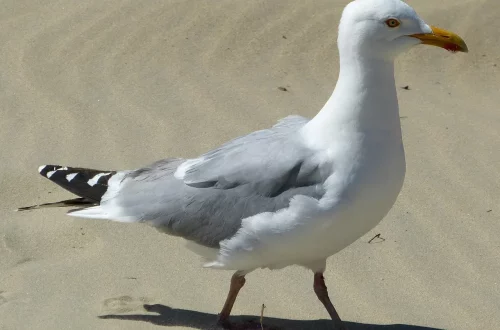
How Long Is Beef Tallow Good For and How to Store It Properly
Beef tallow, rendered fat derived from cattle, has been a staple in kitchens for generations. This versatile cooking fat is not only prized for its rich flavor but also for its high smoke point, making it an excellent choice for frying and sautéing. In recent years, there has been a resurgence of interest in traditional fats like tallow, driven by a growing awareness of the benefits of using natural, minimally processed ingredients. Many chefs and home cooks alike are rediscovering the culinary possibilities that beef tallow offers, from enhancing the taste of roasted vegetables to creating flaky pastries.
Understanding how to store beef tallow properly is crucial to maintaining its quality and extending its shelf life. Improper storage can lead to rancidity, which not only affects the flavor but can also pose health risks. When stored correctly, beef tallow can last for months, providing a reliable cooking fat that can elevate countless dishes. The key to maximizing its shelf life lies in recognizing the ideal storage conditions and knowing the signs of spoilage.
As culinary enthusiasts and health-conscious individuals alike explore the uses of beef tallow, it’s essential to consider how long it remains good and the best practices for storage. This knowledge will empower you to make the most of this remarkable ingredient while ensuring your kitchen remains stocked with quality cooking fats.
Understanding the Shelf Life of Beef Tallow
Beef tallow, when rendered properly, can have an impressive shelf life. Generally, it can last anywhere from several months to a couple of years, depending on how it is stored. The fat’s longevity is influenced by several factors, including exposure to light, air, and temperature.
One of the most significant factors affecting the shelf life of beef tallow is its exposure to oxygen. When tallow is exposed to air, it can oxidize, leading to rancidity. Rancid fat not only loses its desirable flavor and aroma but can also produce harmful compounds over time. Therefore, it is essential to minimize exposure to air by sealing the tallow in airtight containers. Glass jars with tight-fitting lids or vacuum-sealed bags are excellent options for storage.
Another crucial aspect to consider is temperature. Beef tallow should be stored in a cool, dark place, ideally in the refrigerator or freezer. While it can be kept at room temperature for a short period, prolonged exposure can significantly shorten its shelf life. In the refrigerator, tallow can last for up to a year, while storing it in the freezer can extend its usability even further. It is advisable to portion the tallow into smaller amounts before freezing, allowing for easy thawing and minimizing the time that any single portion is exposed to air.
Additionally, the method of rendering the tallow can impact its freshness. Tallow that has been rendered at a lower temperature and strained carefully will generally retain its quality longer than tallow that has been rendered quickly and left unfiltered. Always aim for high-quality, grass-fed beef when rendering tallow, as this can enhance both its flavor and nutritional profile.
Proper Storage Techniques for Beef Tallow
To ensure that beef tallow remains fresh for as long as possible, it is essential to employ proper storage techniques. As mentioned, keeping it in airtight containers is crucial, but there are additional methods to enhance its preservation.
Firstly, consider using glass containers, which are non-reactive and help prevent any unwanted flavors from leaching into the tallow. If you choose to use plastic containers, ensure they are of high quality and specifically designed for food storage to minimize any risk of chemical leaching.
It’s also a good idea to label your containers with the date of rendering or packaging. This simple step can help you keep track of how long the tallow has been stored and when it is time to use or discard it. By having a clear record, you can avoid the risk of using tallow that has exceeded its shelf life.
When it comes to freezing beef tallow, ensure that it is cooled completely before transferring it to the freezer. Hot or warm fat can raise the temperature inside the freezer, potentially affecting other frozen items. Portioning the tallow into smaller containers or ice cube trays can make it easier to thaw only what you need, reducing waste and maintaining the quality of the remaining tallow.
Lastly, avoid refreezing previously thawed tallow. Each freeze-thaw cycle can degrade the quality of the fat, leading to changes in texture and flavor. Instead, try to only thaw the amount you plan to use, allowing for optimal quality in your cooking.
Signs of Spoilage in Beef Tallow
Being able to identify the signs of spoilage is essential for anyone using beef tallow in their cooking. Even with proper storage techniques, tallow can go bad, and it’s vital to recognize when it is no longer safe to use.
One of the first indicators of spoilage is an off or rancid smell. Fresh beef tallow should have a mild, pleasant aroma. If the scent is sour, bitter, or otherwise unpleasant, it is likely that the tallow has gone rancid. It’s important to trust your senses; if something smells off, it’s better to err on the side of caution and discard it.
In addition to smell, the appearance of the tallow can also provide clues about its freshness. Fresh beef tallow is typically a creamy white or pale yellow color. If you notice any discoloration, such as darkening or the presence of mold, it’s a clear sign that the fat has spoiled. Additionally, if the texture becomes grainy or slimy, it is no longer safe to consume.
Taste is another way to assess the quality of beef tallow, but it should only be tested if you are confident that the fat has not shown any signs of spoilage. A small taste can reveal if the flavor has turned sour or off. If in doubt, it’s always safer to discard the tallow rather than risk using spoiled fat in your cooking.
Regularly checking your stored tallow for these signs will help ensure that you only use fresh, safe ingredients in your meals. By being vigilant and informed, you can enjoy the culinary benefits of beef tallow while minimizing waste and maintaining food safety.
In conclusion, beef tallow is a valuable ingredient that can enhance your cooking. However, understanding its shelf life, proper storage methods, and recognizing spoilage signs is crucial for safe and effective use.
**Disclaimer:** This article is not intended as medical advice. For any health-related concerns, please consult a healthcare professional.




